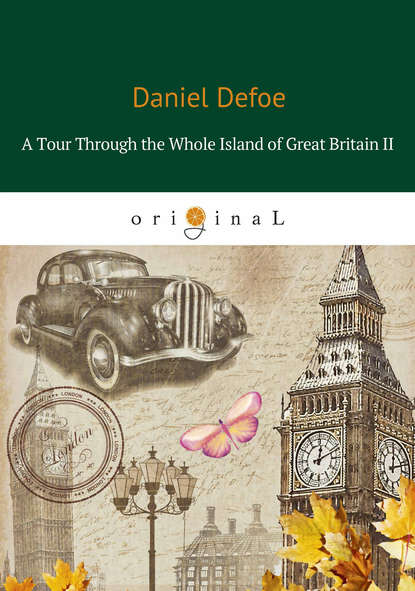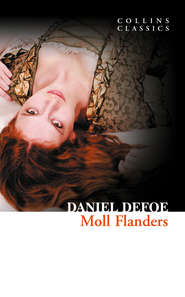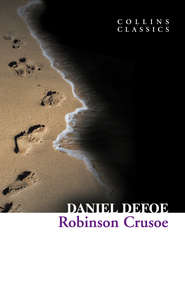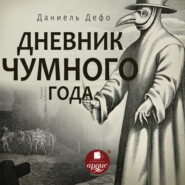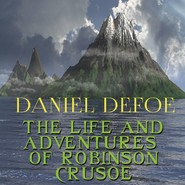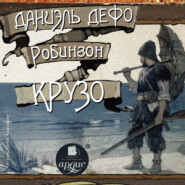По всем вопросам обращайтесь на: info@litportal.ru
(©) 2003-2024.
✖
A Tour Through the Whole Island of Great Britain II
Настройки чтения
Размер шрифта
Высота строк
Поля
As the low part of this county is thus imployed in grazing and feeding cattle, so all the rest of this large extended country is imployed in the woollen manufactures, and in the best, and most profitable part of it, viz.
I mention this at large, because this trade of fine Spanish medley cloth, being the mix’d colours and cloths, with which all the gentlemen and persons of any fashion in England, are cloth’d, and vast quantities of which are exported to all parts of Europe, is so very considerable, so vast an advantage to England, maintains and supports so many poor families, and makes so many rich ones, that no man can be just in the description of things, and in a survey of this part of England, and not enter into a particular description of it; the above you may take as an introduction to it, only I shall add but a little more, concerning this county of Somerset, and shall, upon my entering into the north-west and west parts of Wiltshire, where the center of this prodigy of a trade is, sum it all up together, and shew you the extent of land which it spreads itself upon, and give you room, at least, to make some guess at the numbers of poor people, who are sustain’d and inrich’d by it.
But I must first go back again a little while into Somersetshire: The northern part of the county, I did not visit in this journey, which, as I hinted before, is only a return from my long travel to the Land’s End. In omitting this part, I, of course, leave the two cities of Bristol and Bath, and that high part of the county called Mendip Hill, to my next western journey, which will include all the counties due west from London; for these now spoken of, though ordinarily called the west country, are rather S. W. than west.
But as I made a little trip from Bridgewater north, into the body of the county, I must take notice of what I observed in that part of it: The first place I came to was Glastenbury, where, indeed, the venerable marks of antiquity, however I have declined the observation of them, struck me with some unusual awe, and I resolved to hear all that could be told me upon that subject; and first they told me (for there are two pieces of antiquity, which were to be inquired of in this place) that King Arthur was buried here, and that his coffin had been found here.
Secondly, that Joseph of Arimathea was here, and that when he fix’d his staff in the ground, which was on Christmas Day, it immediately took root, budded, put forth white-thorn leaves, and the next day, was in full blossom, white as a sheet, and that the plant is preserved, and blows every Christmas Day, as at first, to this very day.
I took all this ad referendum, but took guides afterward, to see what demonstrations there could be given of all these things; they went over the ruins of the place with me, telling me, which part every particular piece of building had been; and as for the white-thorn, they carried me to a gentleman’s garden in the town, where it was preserved, and I brought a piece of it away in my hat, but took it upon their honour, that it really does blow in such manner, as above, on Christmas Day. However, it must be confessed, that it is universally attested.
Where I had the sight of the white-thorn tree, I obtained a sight of Mr. Cambden, and his continuator, and was, at first, a little concern’d, that a person of Mr. Cambden’s judgment, gave such an account of the legendary part of the history of this place, with a taste of his crediting the whole story; and from him I began to believe also, that Joseph of Arimathea, was really here, and that the Christian religion was preached in this island within thirty seven years after the death of our Saviour.
This, however, prompted me to farther inquiry, and the following account occurred, which is to be found, as they say, in the manuscript History of the Church of Glastenbury, now deposited in the Cottonian Library, and taken from it by Mr. Dugdale, in his Monasticon. Fol. 1, 2.
Glastonbury Monastery in Somersetshire, of the Order of St. Benedict
In the year 31 after the Passion of our Lord, twelve of St. Philip the Apostle’s disciples (the chief of whom was Joseph of Arimathea) came into this country, and preached the Christian faith to Arviragus, who refused to embrace it, and yet granted them this place, with twelve hides of land; where they made walls of wattles, and erected the first church in this kingdom, which Christ personally dedicated to the honour of His Mother, and the place for burial of His servants, as is said in the manuscript History of the Monastery of Glastenbury in the Cotton Library. These twelve, and their successors, continuing long the same number, and leading an eremetical life, converted a great multitude of pagans to the faith of Christ. They being all, at length, dead and buried here, the most holy men Phaganus and Diruvianus, coming into these parts, and baptizing King Lucius and his people, had the aforesaid hides confirm’d to them and their successors, the same number of twelve being kept up ‘till the coming of St. Patrick, who, instructing them in the monastical life, became their abbot: After whom, the holy fathers Benignus, Kolumkil, and Gildas, led a most holy life there. Next came St. David Archbishop of Menevia, now called St. David’s, who added a new chapel to the church, dedicating it to the blessed Virgin, and erected a rich altar; and near the said chapel, Joseph of Arimathea, and other holy men, are said to have been buried. Tho’ the church was afterwards several times rebuilt, this place still remained under the former consecration, and was held in such veneration, that kings, bishops, and all the greatest persons, thought themselves happy in adding something to its possessions, or being buried with any small parcel of its earth. St. Dunstan, and other holy abbots, always preserving the number of twelve monks, added to them several clergymen that sung well.
This church, by reason of its antiquity, was by the English called Ealdchurch, that is, Old Church; and the people of the country about it, thought no oath more sacred, than to swear by the Old Church; as being the first, and oldest church in England, and held in such veneration, that it was called a second Rome, for sanctity; because, as Rome was honoured with a multitude of martyrs, so this place was renowned for many confessors.
This island, in which this church stands, was, by the Britons, first called Ynswyxtryn, that is, the Glass Island, by reason of the river, as it were of the colour of glass, incompassing the marsh. It was called an island, because inclosed about by a deep marsh. It was called Avallonia, either from the British word aval, signifying an apple, as being full of fruit-trees, or from Avallon, who was once lord of that territory. The Saxons gave it the name of Glastingebury, that is, the Town of Glass. There are several islands about this, all belonging to it, all which together were reduced to make up the twelve hides above-mentioned, the bounds whereof may be seen in Dugdale, p. 2. and 3. All the places within those bounds enjoy all sorts of immunities, from the first times of Christianity, granted and confirmed to the church of Glastonbury by the British, English, and Norman kings.
This church was the sacred repository of the ashes of a multitude of saints, insomuch that no corner of it, or of the church-yard,, is destitute of the same. There lie the twelve disciples (above-mentioned) of St. Philip the Apostle, with their chief, Joseph of Arimathea, and his son Josephus; also St. Patrick, the apostle of Ireland; St. Benignus, disciple to St. Patrick; St. Pinius, disciple to Benignus; St. Gildas, the British historian; St. David, Bishop of Menevia; St. Dunstan; St. Indrastus, martyr, and his seven companions; St. Urban, martyr; St. Apollinaris, bishop and martyr, disciple to St. Peter the Apostle; St. Vincentius, archdeacon and martyr; three of the Holy Innocents; St. Besilius, martyr; part of St. Oswald, king and martyr; St. Valerius, and St. Salvius, bishops and martyrs; St. Canon, Anastatius, Renignius, Casanius, Abdon, and Sennen, martyrs; St. Paulinus, Bishop of the Northumbrians; St. Aidan, Bishop of Lindisfarn; Coelfrid and Boisilus, abbots; Venerable Bede; St. Benedict, bishop; Hesterpine, Sigfride, and Herbert, abbots; St. Idamus, bishop; St. Teison, abbot, and his twelve companions; St. Iltwich; St. Lilianus, abbot; part of Guthlac, the anchorite; St. Poppa, Archbishop of Treves; St. Geminianus, confessor; the holy virgins Hilda, Hebbe, Begu, Crisante, Udilia, Mary, Martha, Lucy, Walburge, Gertrude, Cecily, Wenta, Mamilla, Edberga, Elfleda, Batildis, Ursula, Daria, Ealswitha; the last of these affirmed to be intire many years after she had been interred. Many more names of holy men and women were lost by the burning of the antient church, and time has worn out the memory of a still greater number.
Many holy relicks were also preserved in this church: Of those relating to the Old Testament, part of Rachel’s tomb; of the altar on which Moses pour’d out oyl; of his book; of the tomb of Isaiah; some manna: relicks of the prophet Daniel; of the three children delivered from the fiery furnace; six gilt stones of the pavement of the Temple, and some of the gate. Relating to our Lord Jesus Christ: Some of the linen He was wrapp’d in; two pieces of the manger; some of the gold offer’d by the Wise Men; five stones out of Jordan, where our Saviour was baptized; one of the vessels in which Christ turned water into wine; of the stones the Devil proposed to Christ to convert into bread; of the five loaves with which our Lord fed five thousand persons; of the place where He was transfigured; of the stone He stood on in the Temple; of His hair; of the hem of His garment; and many more, too tedious for this place: Also relicks of the Blessed Virgin; of St. John Baptist; of the Apostles; of many martyrs, confessors, and holy virgins.
On this account, Glastonbury was every where held in the greatest veneration; and, as has been said, the greatest persons coveted to be buried there; most of whose names have been lost, and of some, mention has been made above.
A few feet from the Old Church stood two pyramids; that next to the church twenty-six feet high, on which were many antiquities worn out by age. On the uppermost story of it, was a pontifical image; on the second, the image of a king, with these letter, Heri, Sexi, and Blisier; on the third, were these words, Wemerest, Bantomp, Wineweng; on the fourth, Hate, Wulfred, and Eanfled; on the fifth, and lowest, an image, and this inscription, Logior, Weslicas, Bregden, Swelves, Hwingendes, Bera. The other pyramid was eighteen feet high, and had four stages, on which was to be read, Hedde Bishop Bregored, and Breorward. What these words signify is not known; but it is guess’d, they were the names of the persons deposited within the pyramid. So great was the respect paid by our ancestors to this place, that they durst not utter any idle words, nor so much as spit in the church, or church-yard, unless compell’d by the utmost necessity, and even then with the utmost reluctancy and remorse: Neither durst any man bring a hawk, horse, or dog into the church, because it had been often observed, that such as had been accidentally brought in, immediately died. Even from foreign countries the earth of this church-yard was sent for, to bury with the greatest persons; and it is reported, that even a Mahometan sultan, having taken an English gentleman in the Holy Land, gave him his liberty, upon promise, that he would bring him a gantlet full of that earth, which was accordingly perform’d, and the gentleman returning to Glastonbury, declared the same upon oath.
As to the burial of King Arthur, Mr. Cambden makes no doubt of it, and gives us from Giraldus Cambrensis, an account how King Henry II. caused search to be made for his tomb, and before they had dug seven foot, they came to a great stone, having a cross of lead on the inside of it, and the subsequent letters, or inscription upon it, and in the following rude character; which the said Giraldus Cambrensis, Mr. Cambden says, was an eye-witness of, as well as of a coffin of hollow’d oak, which they found by digging nine foot deeper than the inscription, wherein were deposited the bones of that great prince.
On the top of a high hill, near a mile from the town, stands an old tower, which the people vulgarly call the TORR; what it was, we are not certain; but it is made famous by one thing in particular; that here King Henry VIII. caused Richard Whitingus, the last Abbot of Glastonbury, to be hanged for refusing to surrender the monastery.
I must confess, that I cannot so much blame the Catholicks in those early days, for reverencing this place as they did, or, at least, ‘till they came to found idolatry upon their respect, if they really believed all these things; but my business is to relate, rather than make remarks.
The inscription on King Arthur’s coffin, is as follows:
Four miles from Glastonbury, lies the little city of Wells, where is one of the neatest, and, in some respects, the most beautiful, cathedrals in England, particularly the west front of it, is one complete draught of imagery, very fine, and yet very antient.
This is a neat, clean city, and the clergy, in particular, live very handsomly; the Closs, or part of the city, where the Bishop’s Palace is, is very properly called so; for it is walled in, and lock’d up like a little fortification, and has a ditch round it.
The dignified clergy live in the inside of it, and the prebendaries, and canons, which are very numerous, have very agreeable dwellings, and live very pleasantly. Here are no less than seven-and-twenty prebends, and nineteen canons, belonging to this church, besides a dean, a chancellor, a precentor, and three arch deacons; a number which very few cathedrals in England have, besides this.
Dugdale, in his Monasticon, tells us, that the church of Wells has given to the kingdom, one Cardinal, six High Chancellors, five High Treasurers, one Lord Privy Seal, one Lord President of Wales, one Secretary of State, all of them bishops of this diocess; the county is the diocess, and contains three hundred eighty-eight parishes, and the arch deaconries are of Wells, Bath, and Taunton.
The city lies just at the foot of the mountains called Mendip Hills, and is itself built on a stony foundation. Its manufacture is chiefly of stockings, as is mentioned already; ’tis well built, and populous, and has several good families in it; so that there is no want of good company there.
Near this city, and just under the hills, is the famous, and so much talk’d of Wokey Hole, which, to me, that had been in Pool’s Hole, in the Peak of Derby, has nothing of wonder or curiosity in it; the chief thing I observed in this, is, what is generally found in all such subterraneous caverns; namely, That the water dropping from the roof of the vault, petrifies, and hangs in long pieces like isicles, as if it would, in time, turn into a column to support the arch. As to the stories of a witch dwelling here, as of a gyant dwelling in the other (I mean in Pool’s Hole) I take them to be equally fabulous, and worth no notice.
In the low country, on the other side Mendip Hills, lies Chedder, a village pleasantly situated under the very ridge of the mountains; before the village is a large green, or common, a piece of ground, in which the whole herd of the cows, belonging to the town, do feed; the ground is exceeding rich, and as the whole village are cowkeepers, they take care to keep up the goodness of the soil, by agreeing to lay on large quantities of dung for manuring, and inriching the land.
The milk of all the town cows, is brought together every day into a common room, where the persons appointed, or trusted for the management, measure every man’s quantity, and set it down in a book; when the quantities are adjusted, the milk is all put together, and every meal’s milk makes one cheese, and no more; so that the cheese is bigger, or less, as the cows yield more, or less, milk. By this method, the goodness of the cheese is preserved, and, without all dispute, it is the best cheese that England affords, if not, that the whole world affords.
As the cheeses are, by this means, very large, for they often weigh a hundred weight, sometimes much more, so the poorer inhabitants, who have but few cows, are obliged to stay the longer for the return of their milk; for no man has any such return, ‘till his share comes to a whole cheese, and then he has it; and if the quantity of his milk deliver’d in, comes to above a cheese, the overplus rests in account to his credit, ‘till another cheese comes to his share; and thus every man has equal justice, and though he should have but one cow, he shall, in time, have one whole cheese. This cheese is often sold for six pence to eight pence per pound, when the Cheshire cheese is sold but for two pence to two pence halfpenny.
Here is a deep, frightful chasm in the mountain, in the hollow of which, the road goes, by which they travel towards Bristol; and out of the same hollow, springs a little river, which flows with such a full stream, that, it is said, it drives twelve mills within a quarter of a mile of the spring; but this is not to be understood, without supposing it to fetch some winding reaches in the way; there would not, otherwise, be room for twelve mills to stand, and have any head of water above the mill, within so small a space of ground. The water of this spring, grows quickly into a river, and runs down into the marshes, and joins another little river called Axe, about Axbridge, and thence into the Bristol Channel, or Severn Sea.
I must now turn east, and south-east, for I resolved not to go up the hills of Mendip at all, this journey, leaving that part to another tour, when I shall give an account of these mountains, as also of the cities of Bath and Bristol, to which they are very near, all in one letter.
I come now to that part of the country, which joins itself to Wiltshire, which I reserved, in particular, to this place, in order to give some account of the broad-cloth manufacture, which I several times mentioned in my first journey, and which is carried on here, and that to such a degree, as deserves a place in all the descriptions, or histories, which shall be given of this country.
As the east, and south parts of Wiltshire are, as I have already observed, all hilly, spreading themselves far and wide, in plains, and grassy downs, for breeding, and feeding, vast flocks of sheep, and a prodigious number of them: And as the west and north parts of Somersetshire are, on the contrary, low, and marshy, or moorish, for feeding, and breeding, of black cattle, and horses, or for lead-mines, &c. So all the south west part of Wiltshire, and the east part of Somersetshire, are low and flat, being a rich, inclosed country, full of rivers and towns, and infinitely populous, insomuch, that some of the market towns are equal to cities in bigness, and superior to them in numbers of people.
This low, flat country, contains part of the three counties of Somerset, Wilts, and Gloucester, and that the extent of it may be the easier understood by those who know any thing of the situation of the country, it reaches from Cirencester in the north, to Sherburn on the edge of Dorsetshire south, and from the Devizes east, to Bristol west, which may take in about fifty miles in length where longest, and twenty in breadth where narrowest.
In this extent of country, we have the following market towns, which are principally employed in the clothing trade, that is to say, in that part of it, which I am now speaking of; namely, fine medley, or mix’d cloths, such as are usually worn in England by the better sort of people; and, also, exported in great quantities to Holland, Hamburgh, Sweden, Denmark, Spain, Italy, &c. The principal clothing towns in this part of the country, are these,
These towns, as they stand thin, and at considerable distance from one another; for, except the two towns of Bradford and Trubridge, the other stand at an unusual distance; I say, these towns are interspers’d with a very great number of villages, I had almost said, innumerable villages, hamlets, and scattered houses, in which, generally speaking, the spinning work of all this manufacture is performed by the poor people; the master clothiers, who generally live in the greater towns, sending out the wooll weekly to their houses, by their servants and horses, and, at the same time, bringing back the yarn that they have spun and finished, which then is fitted for the loom.
The increasing and flourishing circumstances of this trade, are happily visible by the great concourse of people to, and increase of buildings and inhabitants in these principal clothing towns where this trade is carried on, and the wealth of the clothiers. The town of Froom, or, as it is written in our maps, Frome Sellwood, is a specimen of this, which is so prodigiously increased within these last twenty or thirty years, that they have built a new church, and so many new streets of houses, and those houses are so full of inhabitants, that Frome is now reckoned to have more people in it, than the city of Bath, and some say, than even Salisbury itself, and if their trade continues to increase for a few years more, as it has done for those past, it is very likely to be one of the greatest and wealthiest inland towns in England.
I call it an inland town, because it is particularly distinguished as such, being, not only no sea-port, but not near any sea-port, having no manner of communication by water, no navigable river at it, or near it. Its trade is wholly clothing, and the cloths they make, are, generally speaking, all conveyed to London: Blackwell-Hall is their market, and thither they send up the gross of their clothing product; and, if we may believe common fame, there are above ten thousand people in Frome now, more than lived in it twenty years ago, and yet it was a considerable town then too.
Here are, also, several large meeting-houses, as well as churches, as there are, generally, in all the manufacturing, trading towns in England, especially in the western counties.
The Devizes is, next to this, a large and important town, and full of wealthy clothiers; but this town has, lately, run pretty much into the drugget-making trade; a business, which has made some invasion upon the broad-cloth trade, and great quantities of druggets are worn in England, as also, exported beyond the seas, even in the place of our broad-cloths, and where they usually were worn and exported; but this is much the same as to the trade still; for as it is all a woollen manufacture, and that the druggets may properly be called cloth, though narrow, and of a different make, so the makers are all called clothiers.
The River Avon, a noble and large fresh river, branching itself into many parts, and receiving almost all the rivers on that side the hills, waters this whole fruitful vale; and the water of this river seems particularly qualified for the use of the clothiers; that is to say, for dying the best colours, and for fulling and dressing the cloth, so that the clothiers generally plant themselves upon this river, but especially the dyers, as at Trubridge, and Bradford, which are the two most eminent cloathing towns in that part of the vale for the making fine Spanish cloths, and of the nicest mixtures.
From these towns south, to Westbury, and to Warminster, the same trade continues, and the finest medley Spanish cloths, not in England only, but in the whole world, are made in this part. They told me at Bradford, That it was no extraordinary thing to have clothiers in that country worth, from ten thousand, to forty thousand pounds a man, and many of the great families, who now pass for gentry in those counties, have been originally raised from, and built up by this truly noble manufacture.
If I may speak here from the authority of the antient inhabitants of the place, and who have been curious observers upon this subject, the country which I have now described, as principally imploy’d in, and maintained by this prodigy of a trade, contains two million, three hundred and thirty thousand acres of land, and has in it seven hundred eighty-eight parishes, and three hundred and seventy-four thousand people. It is true, that this is all guess-work; but I must confess myself very willing to believe, that the reckoning is far short of the account; for the county is exceeding large and populous.
It may be worth enquiry, by the curious, how the manufacturers, in so vast a consumption of the wooll, as such a trade must take up, can be supplied with wooll for their trade; and, indeed, it would be something strange, if the answer were not at hand.
1. We may reasonably conclude, that this manufacture was at first seated in this county, or, as we may say, planted itself here at first, because of the infinite numbers of sheep, which were fed at that time upon the downs and plains of Dorset, Wilts, and Hampshire, all adjoining, as a trading town is seated, or rises gradually upon some large river, because of the benefit of navigation; and as gentlemen place the mansion houses of their estates, and seats of their families, as near the pleasant rivers, woods, and fine prospects as possible, for the delight of their living; so the first planters of the clothing manufacture, doubtless, chose this delightful vale for its seat, because of the neighbourhood of those plains, which might be supposed to be a fund of wooll for the carrying it on. Thus the manufacture of white cloth was planted in Stroud Water in Gloucestershire, for the sake of the excellent water there for the dying scarlets, and all colours that are dyed in grain, which are better dyed there, than in any other place of England, some towns near London excepted. Hence, therefore, we first observe, they are supplied yearly with the fleeces of two or three millions of sheep.
2. But as the number of sheep fed on these downs is lessened, rather than increased, because of the many thousand acres of the carpet ground being, of late years, turned into arable land, and sowed with wheat; which, by the way, has made Warminster a market town, on the edge of Somersetshire, as it now is, without exception, the greatest market for wheat in England, with this exception only, viz. Where none of it is bought to send to London.
3. I say, The number of sheep, and consequently the quantity of wooll, decreasing, and at the same time the manufacture, as has been said, prodigiously increasing, the manufacturers applied themselves to other parts for a supply, and hence began the influx of north-country wooll to come in from the counties of Northampton, Leicester, and Lincoln, the center of which trade, is about Tetbury and Cirencester, where are the markets for the north-country wooll, and where, as they say, several hundred packs of wooll are sold every week, for the supply of this prodigious consumption.
4. From London, they have great quantities of wooll, which is generally called Kentish wooll, in the fleece, which is brought up from thence by the farmers, since the late severe Acts against their selling it within a certain number of miles of the sea, also fell-wooll for the combers, bought of the wooll-staplers in Barnabystreet, and sent back by the carriers, which bring up the cloths to market.
5. They have also, sometimes, large quantities of Irish wooll, by the way of Bristol, or of Mynhead, in Somersetshire; but this is uncertain, and only on extraordinary occasions. I omit the Spanish wooll, as being an article by itself.
Thus, in short, as those that see the numbers of sheep fed on the downs and plains, as above, and that see the quantity of wooll brought to the markets of Tetbury, and other towns, and the quantity sent from London, all into this one vale, would wonder how it was possible to be consumed, manufactured, and wrought up; so on the other hand, those that saw the numbers of people imploy’d, and the vast quantity of goods made in this part of England, would wonder where the whole nation should be able to supply them with wooll.





